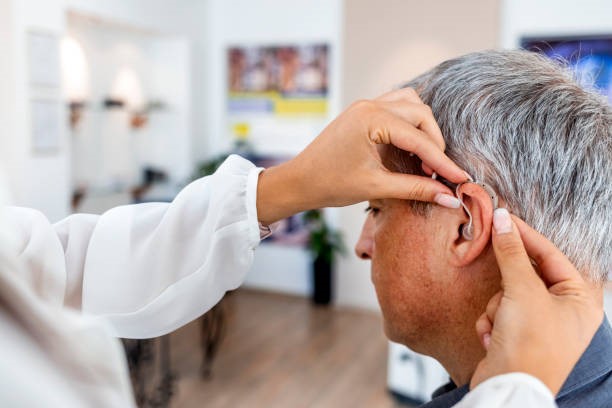Sudden deafness: causes, symptoms, diagnosis and treatment
Sudden onset deafness (SBI) refers to the sudden and rapid loss of hearing, and is a medical emergency. Hearing loss affects only one ear – unilateral hearing loss, in very rare cases, deafness occurs in both ears – bilateral hearing loss. The diagnosis and prompt intervention of the ENT doctor can make the difference between regaining and definitive hearing loss.
Content
Sudden deafness – causes and symptoms
Diagnosis of suddenly installed deafness
Treatment for suddenly installed deafness
Sudden deafness – causes and symptoms
Sudden onset deafness is inexplicable for the patient, occurs quickly, in less than 72 hours, and can be caused by a multitude of conditions. In 10% of cases of sudden deafness, the cause of the hearing loss can be accurately determined.
Among the causes of sudden deafness are:
- Acute infections, for example – bacterial meningitis, mumps, herpes virus infection;
- Cranio-cerebral trauma
- Middle and internal ear barotrauma
- The use of ototoxic drugs, such as aminoglycoside antibiotics, vancomycin, cisplatin, furosemide, ethacrynic acid
- Acoustic neurinoma, an intracranial tumor that, as it develops, can affect hearing
- Autoimmune diseases
- Cerebellar vascular accident
- Meniere’s disease, a condition of the inner ear that causes vertigo, the sensation of “whooshing”, “noise” in the ear (tinnitus), as well as progressive hearing loss
- Multiple sclerosis
- Vascular pathology.
The symptoms that appear in case of sudden deafness are:
- The hearing drops suddenly and profoundly in one of the ears
- The patient feels that his ear is blocked
- There are noises in the affected ear
- Dizziness occurs
- The ability to understand spoken language with the affected ear decreases (patients often discover hearing impairment during telephone conversations or watching TV when they feel the need to turn up the volume to hear).
Diagnosis of suddenly installed deafness
In order to make a diagnosis in the case of sudden deafness, the ENT doctor will perform an anamnesis and a series of investigations in the field of OtoRhinolaryngology (ENT). Specifically, the diagnostic algorithm consists of:
- Anamnesis – includes a discussion with the patient to determine:
- the nature of the hearing loss – unilateral hearing loss or bilateral hearing loss
- the presence of an acute pathological event – barotrauma, infection or if the patient has suffered a head trauma
- the presence of other otological symptoms – tinnitus, ear discharge, vertigo, including neurological ones (for example: headache, facial asymmetry or weakness, taste abnormalities).
- Microscopic otoscopy – for the examination of the external auditory canal, the tympanic membrane and the tympanic cavity. Through microscopic otoscopy or direct visualization, the doctor will note:
- appearance of the tympanic membrane
- presence or absence of perforations
- the presence of pathological discharges or other injuries.
- Examining cranial nerves 5, 7, 8, as well as the vestibular function, the doctor will record any motor and sensory abnormalities of the face, as well as any balance abnormalities.
- Instrumental acumetry – with the help of an instrument called a tuning fork, the doctor will note the patient’s response to the Weber and Rinne tests.
- Tone and voice audiogram – used to measure the level of hearing loss in the affected ear.

Treatment for suddenly installed deafness
Sudden onset deafness (SBI) is a medical emergency. Failure to treat or postponing long-term treatment can lead to irreversible hearing loss.
The treatment of sudden onset deafness consists in administering a transtympanic cortisone injection. The procedure involves surgical perforation of the tympanic membrane under microscopic control, followed by the injection of an anti-inflammatory steroid into the tympanic box.
Also, the ENT doctor can recommend steroid anti-inflammatories, vitamins and microcirculation stimulants as part of the treatment in case of suddenly installed deafness.

